Pride and Progress: Making Schools LGBT+ Inclusive Spaces
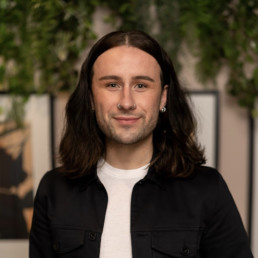
Written by Jo Brassington
Jo Brassington (they/them) is a former primary school teacher, the co-founder of Pride & Progress, and the co-author of Pride & Progress: Making Schools LGBT+ Inclusive Spaces. They work with schools, universities, and charities primarily around LGBT+ inclusion, trans awareness, and children's mental health.
‘Every person in a school community should be free to be them- selves, to feel seen, to feel safe, to feel supported, and to feel like they belong.’
–
For a moment – close your eyes – and picture a school.
What did you see?
Maybe you saw classrooms, or hallways, or uniforms you hated wearing as a kid.
Maybe you saw your favourite teacher, or your least favourite teacher, or perhaps you saw yourself standing at the front of class as the teacher. Maybe, like Jo, your mind immediately pictured the full-chorus cafeteria scene from High School Musical… or, maybe not.
It doesn’t matter exactly what you pictured – the point is that everybody reading this book has a picture. Every person holds an image in their mind of what schools look like, perhaps even what they feel like. Most of us hold with that image judgements of what we believe schools should look like.
Where does this picture come from?
Each of our images are individual, and they come from our own interactions with schools. All of us have experiences in these educational spaces, which have shaped our perceptions and understanding of them. This is one of the reasons that conversations about education are often so contentious, because every person has buy-in to the discussion. Perhaps your experience is from when you navigated school yourself as a young person, more recently as a parent, or as a person who works in a school every day. Perhaps, if you’re an educator like us, it feels like you never really left school.
–
Now, for another moment – close your eyes – and picture this time a school which is an LGBT+ inclusive space.
What do you see?
Please, take your time. Really try to imagine it. What would it look like for a school to be a diverse, equitable, and inclusive space for LGBT+ people? A safe space for all young people who occupy it, for their families, and for the adults who run it. Is the space you’re imagining now similar or different to the school you imagined earlier? Is it similar or different to the schools you experienced yourself as a young person? Is it similar or different to the schools you are helping to create now as an educator or parent?
Our guess is that you probably found the second school harder to imagine, right? You were all able to picture schools because of the reference points and direct experiences you have with them. But, when it comes to imagining an LGBT+ inclusive educational space, many of you won’t have these reference points, or direct experiences. This is because for most people reading this book, the system you were educated under was not LGBT+ inclusive. Whether you noticed it at the time or not, it’s likely your own education did not make space for LGBT+ people, or their stories. In fact, there was legislation in place to purposefully ensure that this community of people were not spoken about in schools.
So, when we asked you to imagine an inclusive school, what we were really asking was for you to reimagine. To take your experiences in a non-inclusive system and reimagine them. To take an educational history of silence and shame and reimagine it. To take your perceptions and ideas of what a school should look like and reimagine them for a better, more inclusive, future.
This reimagining is exactly what our new book aims to explore, and it all began in a tapas bar in Nottingham.
In the summer of 2020, as England emerged from the first of its COVID-19 lock- downs, the two of us sat together in the window of a tapas bar in Nottingham. It was during the period of time where we were all adjusting back to conversations in real life, and the realisation that people didn’t just exist from the shoulders up in a rectangle on zoom.
In fact, this was the first time we were meeting in person, although it felt as though we knew each other quite well. For a while we had been organising or hosting online events to discuss LGBT+ inclusive education with other teachers. Through the online events we had been involved in, and through Adam’s doctoral research at the time, we were beginning to hear incredible stories of educators who were quite powerfully reimagining their educational spaces to make them more inclusive. The difficulty was, as Jo put it that day over dinner, that these conversations were only ever heard by the few in attendance, and once these events were over, it felt like the conversations ended there.
We wanted a way to share these stories, to amplify these conversations, and to bring together the people who often felt like they were doing this work alone. It was over that dinner when Adam first floated the idea of a podcast. What if we recorded these conversations? What if we shared these stories? What if more people could hear about the amazing work these educators are doing to reimagine their schools? We both left that restaurant with these questions buzzing in our minds, until eventually, they became the bedrock of Pride & Progress.
When we launched the Pride & Progress podcast we did so with this statement:
‘For a while now, we have been organising events for LGBT+ educators and allies to discuss inclusive education. During these events, people shared powerful stories of pride, and of the progress being made in education. We want to share these stories, to amplify the voices of LGBT+ educators and cel- ebrate inclusion, progress, and the power of diversity.
We are living in a unique and pivotal moment for inclusive education. Now, for the first time ever, educators are strongly encouraged and enabled to make education, and our educational spaces, inclusive of LGBT+ lives. This requires a complete reimagining of what education could, and should, look like: an education that reflects the diverse society, allowing all people to see themselves and to feel they belong.
Join us as we amplify the voices of these LGBT+ educators and allies, share their stories of pride and progress, and celebrate the true power of diversity in education.’
–
Since sharing that statement, we have curated a collection of conversations and stories from people who are all, in their own way, reimagining educational spaces to make them more LGBT+ inclusive. We have spoken to teachers, leaders, trainees, charity workers, authors, actors, and activists.
Each conversation has helped us to learn, to unlearn, and to reimagine. In our new book, Pride & Progress: Making Schools LGBT+ Inclusive Spaces, we pull on each of those conversations, stories, and lessons to help you to begin to develop the reference points and experiences needed to yourself begin reimagining schools as LGBT+ inclusive spaces.
From hours of conversation, we have drawn together ten themes that we think are the keys to reimagining educational spaces. In each chapter we combine the lived experience of our podcast guests, with theory and research, to explore what each theme looks like in theory, in practice, and in action, to create an essential guide for educators who want to make their educational spaces more LGBT+ inclusive.
Ultimately, the book explores how we can reimagine our educational spaces to ensure that every person in them feels free to be themselves, feels seen, feels safe, feels supported, and feels like they belong.
Sounds good, right? You can grab your copy at a discounted rate during Pride Month on the Sage Website. Find out more here:
AI: Ethics, Equity and Education

Written by Gemma Clare
Gemma is an experienced writer, specialising in education and child development. With a background as a former Inclusion Leader, Teacher, and SENCo, she is dedicated to sharing ideas that make a positive impact on the lives of children.
Maya sits down to do their homework. Instead of reaching for their textbooks, they turn to Artificial Intelligence (AI) to complete their research. Aiko sits down to assess their students. Instead of relying purely on their teacher-judgement and observation, he uses an AI-powered assessment tool.
AI provides an exciting opportunity for students and teachers to work in different ways and it’s becoming more established as a helpful tool in education. You can read numerous articles celebrating the benefits of AI for schools and colleges – as a tool for planning, assessment, personalised learning and more.
However, AI is presenting us with a new set of ethical issues. With concerns over bias, misinformation and unreliable sources, it’s become more important than ever for the education system to effectively teach pupils how to be critical of information.
The Bias Problem
Machine learning algorithms are only as unbiased as the data they are trained on, which means that they can perpetuate and even amplify biases in society. There are numerous examples of where AI bias has caused both small and large-scale discriminatory practices.
Take for example COMPAS, a tool used to predict whether criminals will re-offend, which wrongly predicted that black defendants were nearly twice as likely to do so as white defendants.
There’s also Tay, the Twitter bot from Microsoft that quickly became a sexist, racist and xenophobic holocaust denier after engaging with the public.
There are countless other examples, across healthcare, education, recruitment and more where machine-based bias has had a damaging effect on those with protected characteristics.
Think about how unchecked bias in AI technologies could impact the pupils in your school, and the wider influence this might have on society. For example, what would happen if an algorithm designed to predict student performance wrongly predicted that the black pupils in your class wouldn’t achieve as well as their white peers?
Misinformation
Another significant concern with AI is the prevalence of misinformation and false narratives. For example, despite scientific knowledge being used to train Galactica AI, ‘It spat out alarmingly plausible nonsense‘ such as incorrect summaries of research.
The increasingly popular ChatGPT-3 collates information from across the web, much of which is not factually accurate despite how assured it sounds in its delivery. It also seems to churn out multiple ‘sources’ which, when you look for them, simply don’t exist.
It’s now simple to create a very convincing narrative which is either partially or completely fabricated. This can be particularly problematic in the era of social media, where content can spread rapidly and without verification (either intentionally, or not).
Combine this with the flaws in bias and you can see how quickly AI can be at the forefront of disastrous consequences for equality and equity.
Take for example the case of ChatGPT-4 reinforcing sexist gender stereotypes when prompted to describe the education and career choices of a boy and a girl. In this example, the boy says “I don’t think I could handle all the creativity and emotion in the fine arts program.” and the girl replies that she can’t handle “all the technicalities and numbers in the engineering program”. Imagine your pupils using these tools to study and taking the answers as fact – reinforcing harmful narratives.
So, What Does This Mean for Educators?
You may be thinking, ‘these are problems for the developers of AI to solve, what have I got to do with this?’ and of course, developers need to be actively addressing these concerns. However, until every piece of AI technology is held accountable against rigorous ethical standards, these damaging flaws will remain, and we need to be aware of our own role within this.
Many of our pupils will be users of AI technology, both at home and in school. They’ll be accessing information and learning in a completely different way to previous generations. Educators play a vital role in preparing pupils for their future – and their future now includes AI technology.
As educators, we can empower our pupils to make informed decisions based on what they read and listen to. We have the opportunity to teach them to evaluate the credibility of sources and question information. Pupils can be explicitly taught to recognise and challenge biases when they encounter them and to understand the signs of unreliable sources, such as an over-reliance on anecdotal evidence.
Of course, teaching pupils to be critical of all information available to them is important, not just AI-generated content. With the prevalence of targeted advertising and propaganda circling the internet, it’s also important to teach pupils how to recognise the agendas of the content they encounter. This includes being able to identify political or commercial interests that may influence the information presented to them.
One way to achieve this is to teach pupils to identify language techniques, such as loaded language or euphemisms, that may reveal a hidden agenda. This can be particularly useful when analysing news articles or opinion pieces, where the author’s bias can be subtle but powerfully influential. By understanding how language can be used to manipulate readers, pupils can become more critical and discerning consumers of digital content.
This is an important conversation to be having in the education space right now. The ability to critically analyse the trustworthiness of content and separate fact from fiction is becoming an increasingly essential skill. If we’re not preparing the next generation of young people for this, we risk further aggregation of societal polarisation and inequality.
Educators have a unique opportunity and power to help young people to navigate the problems generated by new AI technology.
The next question is, are we adequately equipped to meet this challenge?
LGBT+ Inclusion for Catholics
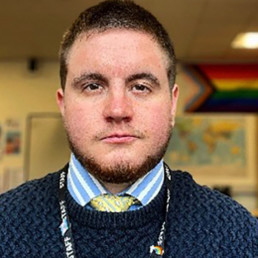
Written by George White
George White is an experienced teacher of RE and a Diversity & Inclusion Lead at a Catholic secondary school in Leicester. He holds a BA in Philosophy and Theology from Heythrop College, an MA in Global Ethics and Human Values from King’s College London and a Secondary PGCE in Religious Studies from the University of Cambridge. As an openly trans and Catholic educator, he has delivered conferences on LGBT+ Inclusion in Catholic Schools to the NEU as an LGBT+ rep for the East Midlands, Schools Inclusion Alliance, ASCL and more.
The official teaching of the Catholic Church, found in the Catechism, states that ‘[LGBT+ People] are to be accepted with sensitivity, compassion and respect. Any form of unjust discrimination in their regard should be avoided.’
One of the greatest privileges I have had in the last 12 months came from my role as one of the committee members at Quest, the charity aimed at LGBTI Catholics and their families providing pastoral support. In the summer term of last year, we hosted an online conference titled ‘LGBT+ Inclusion in Catholic Schools’ with Fr James Martin SJ who has always been a vocal advocate for the LGBT+ community despite the vast number of threats he receives online. In spite of that, he has received commendation from Pope Francis for his ministry towards LGBT+ Catholics when he said, ‘I pray for you and your work’ in a letter received in 2023 and prior to that Pope Francis thanked him for his ‘pastoral zeal and ability to be close to people with the closeness Jesus had’ in reference to his LGBT+ ministry. I was able to interview Father James Martin SJ in a conversation that lasted the best part of one hour and thirty minutes in which time he gave several helpful ways in which schools – and all Catholics – can be more inclusive of the LGBT+ community. I was set with my questions and after the interview has finished, I tried to process this into some simple tips that anyone might be able to take away from the session. I have settled on the following three, some of which have even been picked up by the Holy Father in the last few months.
Firstly, as Catholic educators and ministers, we are invited to listen to the stories and experiences of the LGBT+ community. In particular, we are invited to listen to the language that the community uses to describe ourselves and our stories. Pope Francis is the first Pope to say the word ‘gay’ instead of the outdated phrase in the catechism ‘homosexual’. When we listen to the stories of others, we are more easily enabled to accept with compassion, sensitivity and respect. Pope Francis encourages us to reach out to those on the peripheries – and very often – LGBT+ people can feel as though they are there. In the school resources provided by each diocese for Synod 21-23, pupils are asked the question, ‘who are the people who feel excluded and left out of the church?’ In my experience, lots of pupils labelled the LGBT+ community amongst others. From what we have seen of the synod responses, the contributions of LGBT+ people and women have been recorded, visibly – perhaps most obviously included for the first time in the history of the Church. I invite my fellow educators to recognise the language they are using in schools; use the preferred names of trans pupils, use ‘gay’ or ‘lesbian’ instead of ‘homosexual’ and invite LGBT+ Catholics to tell their story to pupils and staff. Reprint lanyard cards with pronouns and new photos for pupils who come out. Use LGBT+ people and symbols in marketing material. I was fortunate enough to be selected to be in a campaign for the Department for Education’s ‘Get into Teaching campaign where I spoke openly about being a transgender and Catholic teacher of Religious Education. These visible signs help pupils and staff who are LGBT+ to know that they are welcome and accepted, as church teaching says that we should be.
Secondly, there are many opportunities in the academic calendar that are fitting for both Catholics and the LGBT+ community. Fr James Martin SJ spoke about meeting young people where they are, accompanying them and celebrating their journey in life with them. For example, he has written that Catholics can absolutely celebrate Pride month, providing the focus is on human dignity. There are many ways to celebrate and/or remember the LGBT+ community throughout the year. For example, in my own diocese, we hosted a mass with the intention of remembering ‘Transgender Day of Remembrance’ on November 20th. This is a day where we remember those who have lost their life due to their transgender identity; whether by murder or suicide. We pray for the souls of the departed and also pray for an end to the persecution that they may have faced which led to their death. We wrote bidding prayers with this in mind and came together to remember this event with trans people and allies in our community. In addition, you may choose to look at material that goes out in February which is LGBT+ History Month. We wrote prayers for our morning registration in which we included the scripture from Psalm 139, ‘I praise you for I am fearfully and wonderfully made’ and we invited the school to come together for an end to LGBT+ persecution around the world. This kind of education helps us to prevent discrimination which might be directed towards the LGBT+ community especially from a religious perspective.
Finally, and perhaps the most obvious way to help contribute to the avoidance of persecution, we are called to stand up for the legal rights of our LGBT+ communities and relationships around the world. Pope Francis recently publicly spoke about the great injustice in several countries in the world who give a prison sentence or death penalty to those who are LGBT+. Prior to this, the Pope has advocated for legal same sex unions saying that LGBT+ couples have a right to be protected as families. This is perhaps a little harder for us to easily translate into life at school but not impossible. For a start, we can use clips of Pope Francis talking about these things to educate pupils on the realities of the world and what this means for LGBT+ people. We can also use it to guides our policy writing. As published by the Catholic Education Service in 2018 ‘Made in God’s Image’ we should deal with homophobic, biphobic and transphobic bullying the same way we do other discriminatory bullying. Our policies should clearly state that these types of behaviours will be treated in the same way as racism, sexism and other forms of discrimination. If we do not treat homophobic, biphobic and transphobic bullying in the same way, then we are guilty of breaking the law. Policies (such as those around uniform/make up and behaviour) should be gender neutral so that they apply to all students fairly.
The conversations I have had around LGBT+ Inclusion have led more generally to a review of the way in which we talk about diversity, equality and inclusion for all in our school. We host two ‘Diversity and Inclusion’ weeks a year where we have sessions from outside visitors as well as students sharing with their peers on things like race, faith, gender identity, sexual orientation, mental health, neurodiversity and the intersectional nature of lots of these characteristics. It has helped us to reassess the way in which we raise awareness to and celebrate our own diversity as a Catholic school community. We were commended in our recent Ofsted inspection as being an ‘inclusive’ school and we now have a dedicated staff and pupil group working towards our initiative to celebrate all human dignity in our community and ensure that everyone has a place – and more importantly a voice – at our table. We are guided by the principles of Catholic Social Teaching; solidarity, common good, participation and, of course, human dignity.
Reducing barriers to inclusion by casting a wide net
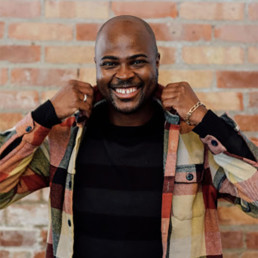
Written by Mahlon Evans-Sinclair
Mahlon Evans-Sinclair is an experienced educator with extensive participation in the fields of learning, professional & personal development, and EDI (Equity, Diversity and Inclusion).
Recently, I updated some guidance on the ‘use of pronouns’ as part of a wider report writing set of guidelines.
From the outset, I’ll say that I didn’t like the singular focus being placed on pronouns. Given that it’s an agitator for many, it felt like it was getting in the way of a wider message about how to write for a document that’s official in nature, but also personal in content. Additionally, the wording gave off a ‘need to know’ basis about any change/accommodation needed for the child in this regard. The twin issues for me in this are that (1) at a school-wide level, it requires the ‘push for assistance’ button to be pressed before ‘support’ can be given and (2) it can lead to a reactive ‘when prompted to’ attitude from teaching staff, with relation to promoting good practice of inclusion as default across the board.
So I changed the wording from a focus on pronouns to a wider acknowledgement to ‘Inclusive Language’ and in doing so, I added the following points:
- Inclusive language is affirming of all students, regardless of identity marker. (It reduces anxiety and barriers associated with identity presentation and supports feeling respected, understood and represented).
- [With regards to gender] Use of gendered terms are perfectly appropriate in many contexts (such as report writing) and don’t need to be consistently avoided, however consideration to use inclusive terms is encouraged across all interactions with students.
- Where a request has been made by both student and parent/guardian to use only the student’s name or [different] pronoun, [this will be communicated] directly.
In updating the guidance, there were a few things I wanted to contextualise, so separate from the document I gave further framing:
- Firstly, we should be working to reduce any barrier of inclusion related to accessing the feeling of being part of/belonging in a space.
- Thinking about it from the famously used and adapted ‘equality/equity’ image, we should be working to remove the fence completely (inclusion/liberation), rather than suggesting that we will treat everyone equally unless there has been a request made by the person facing the greatest barrier for an equitable ‘accommodation’.
- Furthermore, it’s understood that it’s not the responsibility of the person facing the oppression to educate others about it, so if we were to take that into account in this case, being inclusive in our language from the start takes the burden off of students having to ‘out’ themselves in highly visible and potentially unsafe way to feel validated in their identity.
- Finally, (in this case), moving the conversation away from being specifically on gender and reactive in its nature, we have the opportunity to move it to being about being ‘Intentional, Individual and Inclusive’ that both affirms the purpose of the space as well as those who are part of it.
Diversity Doesn’t Begin at School
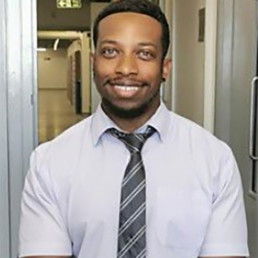
Written by Josiah Isles
Josiah Isles is an Assistant Headteacher and science teacher at Ladybridge High School in Bolton. He is passionate about improving the life chances of students from disadvantaged backgrounds.
As a member of the Diverse Educators community, I am clearly preaching to the converted when I talk about the importance of diversity in our educational settings. Instead, I want to discuss how you build positive relationships within a diverse school and the wider community. It’s a journey my school has embarked upon, full of unexpected twists and turns.
Listen to your student body
As a school, we lead by example, championing the values that are important to us. We want students to understand and see who they are, how their views fit in and how to develop their opinions. By pursuing that path, the school demonstrates behaviours that students can replicate in their lives.
But we have found that there are issues more important to the students that we wouldn’t even think of. For example, our Year 11 students recently highlighted the issue of colourism within the Asian community during a whole school presentation. We have also had to learn more about what our students call ‘pretty privilege’, a term associated with those deemed ‘conventionally pretty’. By listening to our student body, we can understand more and be better prepared when issues and challenges arise.
Immerse yourself into the community
We need to create an environment whereby students don’t have to switch codes or behaviour to accommodate school life. We should allow students to proudly display their cultural identity, which they can embrace as they transition into adulthood.
To do this successfully, we need to reach out enthusiastically to our local community. At Ladybridge High, we have a lot of Muslim students and have actively developed a relationship with our local mosque. Imams have been invited into the school to meet senior leaders. When an issue arises, we look at it from the student’s point of view. We need to step into the shoes of a Muslim student who attends school five times a week, an Islamic school on Saturdays and their local mosque every evening.
We need to remember that being a diverse school can have a huge impact on the wider community. A school is, after all, the heart of the community. Start by organising small events that will bring the community into the school. Low attendance doesn’t mean you are failing; staging regular events will send a powerful message to residents.
Ladybridge High recently held a Warm Hub event for our local community. We had people able to answer any questions visitors had about Universal Credit or food banks. They could purchase pre-loved school uniform. We even had NHS nurses offering smear tests. Attendance wasn’t great, but we will persist by staging further events. Why? We want people to see us as part of the community and an accessible resource.
Training, training, training
Yes, staff training is important when developing relationships within your school and local community. But remember to take your time. Change won’t happen overnight. Think about how you will embark on the journey. Identify areas where there are issues such as unconscious bias.
Ladybridge High has a zero tolerance to any student that uses racist or misogynistic language. The severity with which we challenge such behaviour sets an important tone for the school. Of course, there can be a wariness on the part of teachers about approaching the concepts of diversity. Individuals are rightly concerned about causing offence. Training should help teachers be comfortable with using the right words – especially when explaining offensive language. The BBC Teach website, for example, has articles written by teachers sharing their views and experience of diversity. Many more of us need to pore over its contents to take ideas that we can implement in our schools.
Let me be clear, building positive relationships within a diverse school and the wider community is not easy. It’s not something that can be completed in a term or even a school year. And you need to persist – even when you face insurmountable problems.
Josiah Isles is an Assistant Headteacher and science teacher at Ladybridge High School. For more information about BBC Teach, please visit www.bbc.co.uk/teach
Top Interview Tips for Neurodivergent Educators
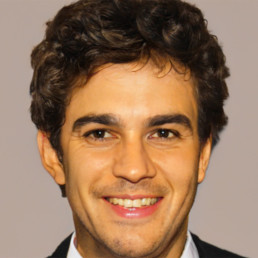
Written by Lance Craving
Freelance Content Producer and Researcher
Interviewing for a job can be stressful for any educator, but neurodivergent candidates tend to face additional challenges that can make the process particularly tough. For example, people on the autism spectrum might face sensory issues if the interview environment is overwhelming. Those with dyslexia may struggle if asked to complete reading and writing-based tasks during an interview.
Providing that you prepare for an interview carefully, there’s no reason why you can’t put your best self forward and have a successful experience as a neurodivergent candidate. Here are three tips to help you prepare for your next interview.
https://unsplash.com/photos/eF7HN40WbAQ
1. Consider disclosing your neurodivergent status in advance
It isn’t essential to disclose your neurodivergent status to a potential employer, but it can be incredibly helpful to do so if you require accommodations for the interview. It might also help you to feel more relaxed and confident in the interview if you don’t feel compelled to hide the fact that you’re neurodivergent. Many people worry that disclosing before an interview could lead to discrimination, but the Equality Act protects you against this. Employers are obliged to consider making reasonable adjustments for interviews when candidates request them, and they cannot discriminate against jobseekers with disabilities.
https://unsplash.com/photos/3iiR4ScIPjs
2. Use the STAR technique to give concise, meaningful answers
If you worry that you may talk too much or too little during an interview, or that you’ll lose track of the questions and fall off topic, the STAR technique could be useful. It helps you to structure answers to behavioural or competency-based questions to give concise examples of your experience and the results you’ve achieved. STAR stands for situation, task, action, results. You describe the context of your example, the task or challenge you had to resolve, the action you took to achieve the goal, and the outcome of your action. The STAR technique is a great way to answer questions like:
- Describe a time you resolved a conflict at work.
- Have you ever had to deal with a student safeguarding issue?
- What would you do if you noticed a colleague made an error?
https://unsplash.com/photos/9cd8qOgeNIY
3. Prepare questions of your own
Interviews go both ways. Employers want to find out if a candidate is the right fit for the job, and candidates want to find out if the job and workplace suits them. Most interviewers give candidates an opportunity to ask questions about the role and the working environment. This is a great opportunity for you to learn more about the job and determine whether the workplace seems supportive of neurodivergent employees. If you have a few questions prepared, this can help you to come across as confident and show that you’re already imagining how you would fit into the role.
Confidence is key to interview success
Unemployment amongst neurodivergent people is as high as 30 to 40%. If we’re to reduce these rates, it’s vital that neurodivergent people approach interviews and jobs with confidence. Doing so will help you to assert your additional accommodations to ensure your interview is as accessible and comfortable as possible. It will also help you to highlight the great strengths your neurodiversity brings that make you such a valuable educator and the right candidate for the job.
Being Comfortable Being Uncomfortable
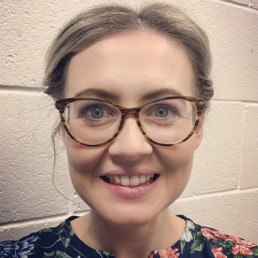
Written by Bethan Hughes
Bethan Hughes is a Second in English in a West Midlands secondary school and joint contributor to the LGBTQ+ toolkit on Diverse Educators.
I am a 33-year-old lesbian who has, probably only recently, become really quite comfortable in my own skin. The irony being that this is, probably only because of a lifetime of enduring being uncomfortable. When you exist outside the norms of society and outside of the dominant discourse, there is an odd sense of not quite ever being ‘inside’ where it is comfortable and instead watching from the other side of the metaphorical windowpane.
What does it actually mean to be comfortable? Comfortable is synonymous with safety, being content with where you are and what’s happening and maintaining the status quo. Comfortable keeps things the same. Being comfortable allows the same practices to continue. Which unless you are a white, heterosexual male might not be beneficial to you and contribute, whether directly or indirectly, to more challenges for others.
Yet to shatter, or at least wobble, the status quo involves putting yourself into a more uncomfortable position. It means speaking up in a meeting if you don’t agree with something or holding someone to account if their views or actions don’t align with what you believe to be morally right. It means having difficult conversations which might not go the way that you want them to go. It’s taking a deep breath, closing your eyes and being prepared to be the first domino to fall. And that’s tough. Especially when you could choose to take the easier route by keeping your mouth shut and trundling on with your daily business. And so, the cycle continues.
Why should I want to be uncomfortable, I hear you say? If we (truly) want to live in a just society then we all need to play our part. But we can’t do this if we are only focusing on the struggles that we personally face; as Martin Luther King said, “no one is free until we are all free.” If we can begin to take steps towards change by only being a tad uncomfortable, surely this is something that we can all commit to?
What might this look like in my educational setting?
- Always start from a place of mutual respect. If you are heading into difficult conversation territory, then this is always a solid start.
- When a student makes a comment or asks a ‘difficult’ question – explore it. Instead of ignoring a ‘that’s so gay,’ comment, address it and explain why the phrase is derogatory. Sometimes a conversation can begin to change someone’s attitudes or at least begin to challenge their ingrained value system.
- If you notice someone being spoken over in a meeting or their ideas not being heard; use your privilege to support that person or to credit their ideas. Consider when you are the most, or one of the most, powerful people in the room and how you can use this to amplify the voices of others. Or, if you don’t hold that power, can you join forces with someone else and support each other?
- Speak to share and not change minds. Use your voice to share your experience or your own feelings whilst being mindful that a conversation often won’t be enough to completely change someone’s mind. Share first and understand that changing minds can be a longer process.
- Speak from your personal experience and not on behalf of others. Also be open to credible sources when discussing information that is not personal to you.
- If you notice something that needs addressing, bring it up to those who have the power to change it. Perhaps the display in the science corridor only celebrates the achievements of men. Perhaps there is a lack of diversity in your English curriculum. Perhaps there is limited policy or support for your LGBTQ+ students. Be brave enough to have that conversation and to do something about it.
- Be patient with yourself and others. Change takes time but begins once we start to go into those uncomfortable spaces.
It’s easy to do nothing but if you have the privilege to do so; be 10% braver and have that conversation so that some of us who are perpetually uncomfortable, can be a little more comfortable.
Building Belonging in Primary Schools with Human Values
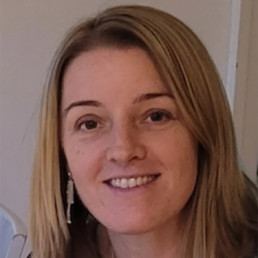
Written by Sarah Pengelly
Sarah has taught in London Primary schools for 12 years specialising in Literacy and PSHE, studied for an MA Educational Psychotherapy and previously worked at the BBC. For the past 5 years, she has been working with non-profit charity, Human Values Foundation, to develop a new values-led PSHE programme called The Big Think
Laying the Foundations of DEI (Diversity, Equity and Inclusion)
The Big Think (TBT) is a PSHE programme for ages 5 to 11 which explores human relationships through the lens of 5 BIG human values (Peace, Love, Truth, Responsibility and Community) and develops 5 BIG Social and Emotional Learning (SEL) skills. Our holistic approach uses Silent Sitting Meditations for Self-Management, Real World stories for Social Awareness skills, Values Inquiry for Responsible Decision-making skills, The BIG Feelings Compass for Self-Awareness skills and a range of safe dialogue practices to build Relationship Skills.
The purpose of TBT is to build Belonging in all pupils and staff because we know that a stronger sense of Belonging in pupils leads to higher performance in all areas (see OECD SEL Report – Beyond Academic Learning 2021)
But when working with Primary schools to embed a whole-school PSHE approach, we are regularly faced with this pressing question from Early Years practitioners: ‘But what about us?’
We will always collaborate, trial, model and adapt our resources for 4-year-olds and younger. But this just isn’t good enough. If we truly want to create a climate of inclusion, equity and celebrated diversity – where EVERYONE (pupils AND staff) feels a strong sense of Belonging – then we must lay the foundations of DEI with the whole school community and start with more serious intentions, and with evidence-based practice, in those precious Early Years.
To this end, we have recently started collaborating with a range of Early Years settings such as The Mulberry House School in West London and Exhall Cedars Infant, Nursery and Pre-school in Coventry, to start together at the beginning and build Belonging in the Early Years from ages 2 to 7.
We are all human first
Human Values work well in all settings and with all ages simply because we are all human and when bringing together groups of people of any age and in any context, this is a powerfully inclusive way to begin. Introducing The Big Think to any school starts with a Community Values Dialogue – a 90-minute circle discussion with 30 invited participants representing the school community (school leaders, teachers, governors, support staff, caregivers, community and faith leaders and most importantly – pupils who are often members of the school council). This will naturally look quite different in different schools and can be face-to-face (always our choice!) or virtual (see case study examples and photographs on the full blog post link below).
Building Belonging in Early Years Settings
The Head Teacher at The Mulberry House School, Victoria Playford, leads with the vision: ‘Born curious, live curious, stay curious’. A prep school in West Hampstead for ages 2 to 7, she wanted to bring to life their PSHE curriculum through their school values and ensure key social and emotional learning skills were being developed throughout the school.
Their Community Values Dialogue involved school council pupils aged from 4 to 7 (including the Minister for Community who was 7!) and offered the chance for very young children to have a voice and part to play in shaping how the school values would influence their PSHE curriculum. Each class has a basket of special animals that bring to life the school values in their everyday learning (e.g. Empathy Elephant, Mindful Meerkat, Resilient Water Bear, Participating Penguin and Meditative Macaque) and these Special Animals became the essence of our work with such young children. A 6-year-old at The Mulberry House School chose to connect Empathy Elephant with the BIG 5 Value of Love ‘because Empathy is about learning to love everyone for who they are’.
Each very young person was able to choose a special animal to link to a core BIG 5 Value and speak about the life skills they would need to show this value in action. Together we created a safe space of non-judgement where everyone could join in with courage, listen with curiosity and respect all ideas. Pupils didn’t have to agree with their peers, teachers or caregivers, and could move the animals around to try out a range of opinions and see which ideas were a best-fit for themselves and their school. A 4-year-old chose to connect the BIG 5 Value of Responsibility with the school’s Resilient Water Bear ‘because it’s my job to ask for help if I need it and this is being resilient’.
During the final check-out of the session, in which everyone is able to share a key idea they will take away and act upon, all adults expressed surprise at the depth of understanding about human values that the very young children were able to demonstrate during the session and the collaborative and inclusive way they were able to make responsible decisions together. We could all see that our youngest humans already know how to live life as natural ambassadors for DEI – we just need to protect safe spaces for them to practise these innate values and skills.
Exhall Cedars Infant, Nursery and Pre-school in Coventry is a vastly different context serving an area of high deprivation. However, it is laying the very same foundations as The Mulberry House School. Headteacher Sharon Hillyard and PSHE Lead Bex Episcopo were keen to build Belonging in their pupils aged from 2 to 7 through self-regulation and oracy skills. They knew that if their children had time to understand themselves more deeply and were able to label their feelings and talk about them, they would feel a stronger sense of Belonging and be able to access learning more readily. Exhall Cedar Infants also use special animals to represent the values (Rex the Resilient Fox, Rory the Respectful Rabbit, Kai the Kind Deer, Nuala the Nurturing Owl, Hadwyn the Honest Hedgehog).
During the Staff Workshop, Early Years teachers shared their experiences of very young pupils who struggled to belong as their communication and language skills were the most underdeveloped they had ever seen – with many arriving unable to make the sounds for animals. For a host of complex reasons, the pandemic, coupled with rising poverty, have had a marked impact on the ability of pupils to feel they belong at school.
In response to this national need, our new Early Years resources will focus on developing Self-Regulation and Oracy skills. Early Years children and staff deserve access to high quality evidence-based resources to support them in the vital work they do in establishing strong foundations on which to build learning and belonging for life. We can’t wait to get started.
See full blog post with photographs and case study examples:
Hair Equality in UK schools: Why Hair Is More Than “Just Hair”?
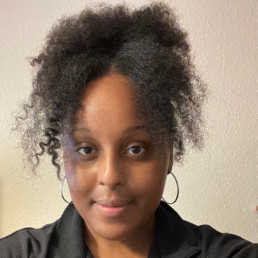
Written by Tori Sprott
Tori has a BA in Philosophy and an MA in Policy Studies in Education. She has a particular interest in Sociology of Race and Education and exploring counternarratives from a racial perspective.
Introduction: Equality in Schools
School is a place where young people spend most of their lives. Schools should be safe spaces for young people to learn and develop their values, self-esteem and life skills. It should be a space where equality is championed and held high as a core value, but unfortunately, this isn’t always the case. This blog will focus on a specific type of inequality that Black and mixed-raced people are often faced with in school, hair discrimination, and will provide schools with some tools for navigating this issue.
In this blog, I will introduce the concept of hair discrimination with a brief outlook on Afro hair and its significance. I will also be referring to real examples of young Black and mixed-race people who have been punished by schools for wearing natural hairstyles. In this blog, I will be using the terms ‘natural hair’ and ‘Afro hair’ interchangeably, referring to the natural kinky texture of Black people’s hair. It is worth mentioning here that in acknowledging Afro hair, we must also acknowledge the diversity within this term, as there is no single natural hair texture.
Hair discrimination: a brief history
On the surface, many may assume that hair is just that: hair. Why the big fuss over something so trivial? The history attached to Afro hair is vast but also a huge identity marker for Black and mixed-race people that many aren’t aware or conscious of. Historically, Afro hair has been a symbol of background and status, a site of oppression, something that required alteration, particularly post-transatlantic slave trade, and a symbol of Black power (Jahangir, 2015). This indicates that the perception of Afro hair has changed throughout history – once being seen as beautiful and powerful, then being seen as the opposite during the transatlantic slave trade where many Black people had their hair shaved off. This led to many people with Afro hair (chemically) straightening their hair to avoid the abuse and stigma post-transatlantic slave trade, and also led to a period of time where people with Afro hair reclaimed power and pride over their natural hair as a response to racism and hair discrimination. The impacts of these ever-changing perceptions are wide-spread and still exist in present day.
The impact of the transatlantic slave trade on how society perceives Afro hair is still present today, resulting in Black and mixed-race people feeling as though they need to straighten their hair to “fit in”, with concepts of ‘good’ [looser curls, softer texture] and ‘bad’ [kinkier more dense hair textures] hair formulating ideas about the acceptable appearance of Black people’s hair (Robinson, 2011).
Hair discrimination in schools: UK context
Research from World Afro Day Hair Equality Report (2019) showed that 82.9% of young people had experienced having their hair touched without consent, and 58% experienced being on the receiving end of uncomfortable questions. These are troubling statistics. These occurrences can be offensive because it points out that there is this sense of difference that inclines those without Afro hair to touch it or ask questions that could leave people feeling alienated. If there were more education on Afro hair, perhaps the occurrence of these uncomfortable encounters would reduce, and overall comfortability for those with Afro-textured hair would increase.
I can remember various occasions as a young Black person being told, “you should straighten your hair”, typically by people who did not have Afro-textured hair. This is quite offensive as it suggests that your Afro-textured hair is perhaps incomplete or undone. It is unfortunate that hair discrimination exists, and we see such incidents occurring in UK schools with Black and mixed-race pupils facing exclusions due to culturally dismissive uniform policies.
Ruby Williams is a young person who faced hair discrimination at school in London. She was told that her hair was a distraction and “too big”, and as a result was sent home on multiple occasions, disrupting her learning. She also speaks on the pressures to straighten her hair in her younger years as natural hair was never represented around her. The problems started when she decided to stop straightening her hair, and she was routinely targeted by the uniform policies that the school had in place, which have since been removed. Ruby’s family took legal action against the school, however, it ended with an out of court settlement (Virk, 2020). In March 2021, students at Pimlico Academy staged a walk out due to uniform policies banning hairstyles that “block the view” of other students (BBC, 2021). In this context, students are having to take matters into their own hands in order to be heard, but this commitment to equality needs to be taken further by those who have authority in policy-making processes.
Jewellery Quarter Academy in Birmingham recently adopted the Halo Code – coined by the Halo Collective as a means of committing to hair equality in workplaces and schools (Newsround, 2020) – stating that “all students should be able to come to school being themselves and feel proud of their identity. That is why we are proud to sign up to the Halo Code” (Chamberlain, 2021).
So, where do we go from here? What can schools do to prevent this from occurring in the future?
Recommendations for school policy – how can we tackle hair discrimination in schools?
- Schools must ensure that their uniform policies surrounding hair styling do not have a disproportionate impact on Black children. Avoid exclusions or any kind of behaviour punishments that would further marginalise that child. Thinking about uniform policies, the language used in such policies (for example, ‘professional’ – what is being suggested if Afro hair isn’t deemed professional, and what impact does this have?), why they have been implemented, and whether they can be adapted for inclusivity. Schools can consult with stakeholders in order to better understand the implications of language used within a policy.
- Schools must create an environment of inclusion and commit to embedding understanding of diversity in the school ethos. Understanding how certain language and descriptions about Afro hair can be problematic. Actively challenging stereotypes and assumptions about Afro hair[styles] that reinforce racist ideas about groups of people. Members of staff should be aware of discriminatory language [amongst pupils and staff] regarding Afro hair and ensure that this is not tolerated or acceptable. For example, the idea that Afro hair is ‘messy’ or ‘not done’; the idea that straighter hair is more ‘professional’ than Afro hair; asking a Black or mixed-race student/staff member if their hair is a wig if it is long or straight.
- Make a pledge – As mentioned earlier, The Halo Collective are a group of campaigners who advocate for hair equality in schools and workplaces. Adopting their Black Hair Code shows commitment to rejecting hair discrimination. A number of schools in the UK have adopted this code. Schools can also make their own pledges about how they will tackle the issue of hair discrimination within their setting and embed this in the school rules.
References
BBC (2021) Pimlico Academy pupils stage protest over ‘racist’ uniform policy, BBC, https://www.bbc.co.uk/news/uk-england-london-56594570
Chamberlain, Z. (2021) School’s bid to end hair discrimination after shocking number of black students face name-calling, Birmingham Mail, https://www.birminghammail.co.uk/news/midlands-news/schools-bid-end-hair-discrimination-21935497
GOV.UK, Discrimination: your rights https://www.gov.uk/discrimination-your-rights
Jahangir, R. (2015) How does black hair reflect black history? BBC. https://www.bbc.co.uk/news/uk-england-merseyside-31438273
Newsround (2020) Halo Code: What is it and how does it protect afro hair? BBC, https://www.bbc.co.uk/newsround/55249674
Robinson, C. L. (2011) Hair as Race: Why “Good Hair” May Be Bad for Black Females, Howard Journal of Communications, 22:4, 358-376.
Are the Equality Laws fit for purpose?
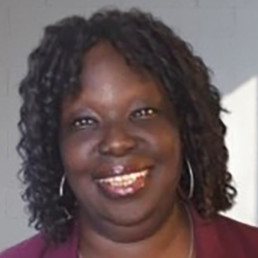
Written by Shola Adewale Sandy
Shola is the proud author of the debut novel called ‘ICE, the trilogy’ which stands for I Can Explain, it’s her memoirs that follows her journey in the educational system as a black women professional and the importance of stopping systematic discrimination, unfortunately she has experienced and witnessed over the years in inner London schools.
When I first walked into a secondary school in inner London, as a black member of staff, I didn’t think anything of it, after all there were others there and they seemed to be doing fine on the surface… I rolled up my sleeves, I was committed, prepared and ready. To the best of my ability, I would do good by those students. I felt this was my calling in life…
I looked at the decorated reception and walked around the massive assembly hall. It was early in the morning, I was enjoying the silence, but excited at what was to come… this is where dreams and aspirations are developed for those young minds and maybe for me too…
Fast forward and they soon sprout up in Year 11, leaving to go out into the big wide world. Having gone through the school system knowing what equality, fairness and hard work really looks like. This is what we teach them, isn’t it?
So what happens, if you find yourself in a situation where you were not being paid the same as your white counterpart or given the same opportunities, despite being a dedicated and a hard working member of staff?
That was me! Can you imagine? I initially thought nothing more of it, after all we have laws to protect people like me in a work environment. I was not even in a union because I was so confident that fairness and common sense would prevail!
“This must be a minor mistake; it will get cleared up in no time!” I said to myself over and over again, as the years went by.
Before you all go for me, I am not generalising, but if you happen to be in a situation and the odds were against you like I was, being in front of such a cantankerous headteacher, what would be your choices?
Remember, you are reminded daily by the micro aggressions towards you, grating away at your skin, getting right to the very core of you. You are nothing more than a mere irritable speck on their shoe, that they can’t seem to get rid of. So where do you go from there, if you please…
Ignore and march on, hoping and praying things would improve – check
Informal discussion with line managers – check
Discussions with other school leaders – check
Union rep – check
Informal discussions and meetings with headteacher –check
Human Resources – check
Union rep again – check
School Governors – check
Formal meetings with headteacher – check
Headteacher’s Peers and other leaders in the community – check
Local Authority – check
Tribunal system – I can’t disclose everything here folks, you will have to read my memoir….
And all you can think of to do in-between!
What do I have to do to be treated fairly, was the question I kept asking myself? As I made my way through the above list.
For most people, their response probably would be:
” I can’t deal with this; I would have been straight out the door!”
Yeah right, I wish it was as easy as that! I was invested in those students for better or for worse! (It’s an unwritten contract when you work in those types of inner city schools)
“No way! I would have to be dragged away in chains screaming and protesting, I would not leave those students by choice!”
Anyway, it was the principle of the whole damn thing! After all, why did our forefathers sacrifice and suffer for, all those years ago, surely so we wouldn’t have too now!
Yes, leaving and getting a job in another school would have been an option, but that’s another conversation to be had. In reality, it is much harder to successfully achieve this, as we need that all important, crucial reference from your former headteacher! Could they be trusted to give you a glowing reference despite your differences, hmm, a lot of people might hesitate at leaving that in the hands of such a person! I know I certainly would!
When I look back, I realise that it is also the system to blame. Giving permission for gross misconduct to take place within Education, allowed that specific headteacher to have the confidence to treat me that way. Knowing profoundly, that they had the power and would ultimately get away with their treatment of me, especially with the support of their loyal allies.
Thankfully, not all headteachers are like this, but you only have to come across one in your lifetime as a black person and trust me you will never forget the experience in a hurry!

